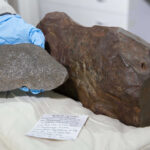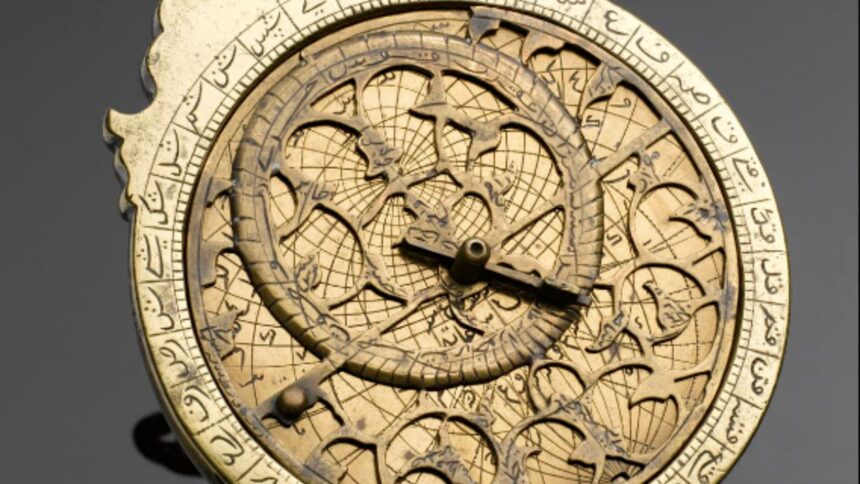The University of Cambridge has reported the discovery of an Islamic astrolabe with Hebrew and Arabic inscriptions that helped guide its owners along their travel routes.
This is an 11th-century astrolabe that became one of the oldest examples of its kind in the world. It was an astronomical instrument that was adapted, corrected, and translated for centuries by Jews, Christians, and Muslims, in Spain, Italy, and North Africa.

The artifact was found in a tomb in a museum in Verona. Dr. Federica Gigante, of Cambridge’s History Faculty and Christ’s College, was the architect of this work, which shed light on one of the devices equivalent to today’s smartphone, according to the scientists.
“When I visited the museum and looked at the astrolabe up close, I noticed that not only was it covered in beautifully engraved Arabic inscriptions, but I could also see faint Hebrew inscriptions. I could only make them out in the grazing light coming through a window. I thought I was dreaming, but I kept seeing more and more. It was very exciting,” described the person responsible for the discovery.

Furthermore, it was emphasised that this object is not just a simple astrolabe, but rather exemplifies the scientific exchange between Christians, Jews, and Muslims over hundreds of years. It was a mutual cooperation that allowed them to navigate and advance their knowledge of the stars.
This instrument, unique in its kind until now, has undergone various modifications, including Hebrew inscriptions that were erased and instructions in a Western language were added.
A 1000-year-old smartphone
Astrolabes were the world’s first “smartphones,” a “portable computer” with hundreds of uses. “They provided a portable, two-dimensional model of the universe that fit in the user’s hand, allowing them to calculate time and distance, plot the position of stars, and even predict the future using a horoscope,” they noted in the article, published by Cambridge University.
The astronomical instrument’s origin is Spanish, as confirmed by the expert, who showed the characteristics that helped identify who might have been behind it. It was created in Andalusia, formerly known as al-Andalus, the area of Spain ruled by Muslims, in the 11th century.
Gigante pointed to Toledo as the city that concentrated the manufacturing of these objects, in a place where the cultural and knowledge exchange between the three most important religions of the region at that time flourished.
One of the sides reads: “To Isḥāq […]/the work of Yūnus.” This means that the astrolabe changed hands over a short period of time. “The two names, Isḥāq and Yūnus, meaning Isaac and Jonah in Spanish, could be Jewish names written in Arabic script, a detail that suggests the object was once circulating within a Sephardic Jewish community in Spain, where Arabic was the spoken language,” the expert said.

The Hebrew engravings suggest that the device originated in Spain and North Africa and circulated in Italy, where the Jewish diaspora also settled. The information described there includes Arabic names, including the description of some of the zodiac signs: Scorpio, Sagittarius, Capricorn, Aquarius, Pisces, and Aries.
It is believed that the astrolabe arrived in Verona because one of the largest communities of Sephardic Jews settled there. The Spanish Jewish scholar Abraham Ibn Ezra (1089-1167) influenced that community, who later carved its recommendations to follow them to the letter in a new country where their religious faith was not prevalent.





